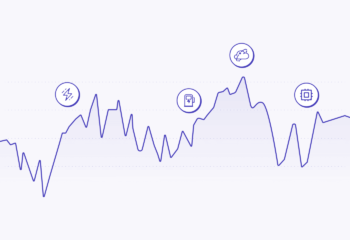Inflation might sound straightforward on its surface—goods and services get more expensive. But some aspects of inflation are surprisingly counterintuitive, and as a result, there are a lot of widely held misconceptions about how it works. Some of my research has focused on this area specifically, as well as how those misunderstandings affect consumers. These questions can bubble up when new inflation data gets released, as it was last week.
In this post, I’ll highlight four things that people often misunderstand about inflation and set the record straight. For an overview of the basics of inflation, I suggest reading my previous Q&A on the subject.
1. Inflation isn’t always a bad thing
Inflation is definitely unpleasant, and it’s understandable that people feel frustrated when the prices of everyday goods rise (as is happening now in late 2025), especially after so many years of low inflation. For many households, these price increases can make it harder to make ends meet if salaries do not keep pace with rising costs. However, it’s useful to remember that inflation can also bring some benefits, particularly for those with outstanding debt like a car loan or mortgage, as consumers end up paying a lower proportion of the asset’s value over time.
Keep in mind that some inflation is actually a good thing. A healthy economy is characterized by moderate but positive levels of inflation—experts in the US typically quantify this around 2%. The most recent CPI data for September 2025 shows we are above that at 3%, but still well below the recent peak in September 2022 (6.6%). While it’s important to keep inflation in check, it’s also good to remember that an economy without inflation, or one experiencing deflation, would not be an economy that grows.
2. Changes in inflation are not the same as changes in price
Many consumers confuse changes in inflation (e.g., a 1% increase or decrease) with changes in prices (e.g., the price of milk rising or falling by $0.50). These are not the same thing—the rate of inflation measures the rate of change in the level of prices, typically on a year-over-year basis.
Whenever inflation is positive, regardless of whether it increases or decreases, prices are always increasing. A decline in inflation means that prices are increasing at a slower rate, not that they are falling. So, if inflation drops from 6% last year to 3% this year, everyday goods will still cost more this year.
After the 2021-2022 inflation surge, many consumers were frustrated that, although the official inflation rate was decreasing, prices remained high. But that was expected. Prices will not go down unless there is deflation, and that is thankfully quite rare.
3. Experts and consumers don’t measure inflation the same way
Some of my research shows there’s a mismatch between how experts and economic institutions define inflation versus how most consumers perceive it. Experts compute inflation by giving more weight to goods and services on which people spend a higher share of their income. For example, if Mike spends $20 a month on milk but $100 a month on electricity, the price of electricity counts five times more than the price of milk in the inflation rate.
However, we find that consumers perceive inflation by giving more weight to the prices they encounter more often in their daily lives: If they buy milk five times a month but only check their utility bill once a month, they count changes to the price of milk five times more heavily than changes to the price of energy, which is exactly the opposite of what experts do.
You can see how this mismatch contributes to consumer frustration, as people feel like the numbers they are told by official sources don’t match the actual price changes they’re experiencing.
4. People tend to recall prices being lower in the past than they actually were
I helped conduct a study asking a large sample of US consumers to recall the prices they paid a year earlier for a set of goods. We then retrieved the actual grocery store receipts of those same consumers for verification.
We found that a significant number of consumers remembered paying less than they actually did. In turn, virtually no consumers recalled paying more. This asymmetric bias in recall leads the same consumers to perceive that inflation has risen more sharply than it actually did, adding to their frustration about inflation.
Inflation is a complicated topic, and it’s easy to see why these misunderstandings persist. That’s part of why I find it such an interesting subject for my own research. I hope this article helps you feel like you understand inflation a bit better.
Disclosure
The information contained in this communication is provided for general informational purposes only, and should not be construed as investment or tax advice. Any links provided to other server sites are offered as a matter of convenience and are not intended to imply that Wealthfront or its affiliates endorses, sponsors, promotes and/or is affiliated with the owners of or participants in those sites, or endorses any information contained on those sites, unless expressly stated otherwise.
© 2025 Wealthfront Corporation. All rights reserved.
About the author(s)
Francesco is a member of Wealthfront’s Investment Advisory Board. He is the A. James Clark Chair in Global Real Estate and a Professor of Finance at Georgetown University. He holds a PhD and MSc in Finance from the University of California at Berkeley. View all posts by Francesco D’Acunto, PhD



